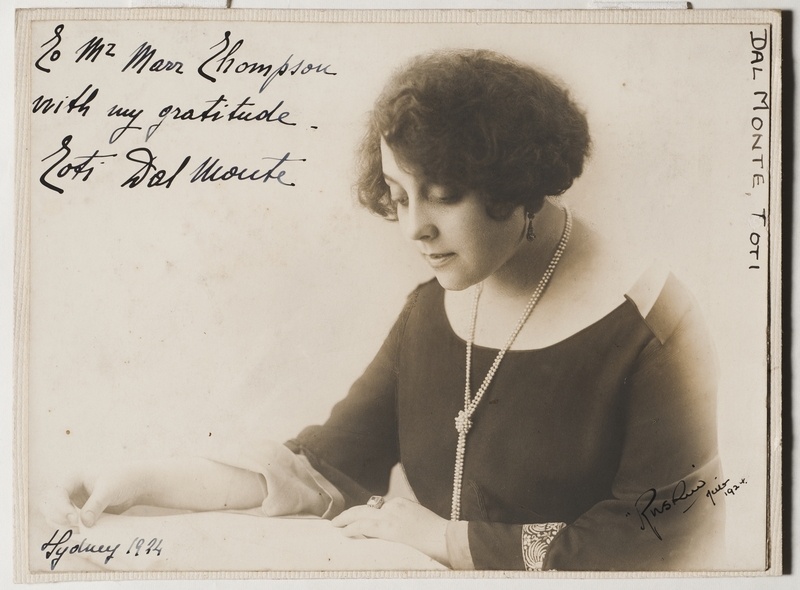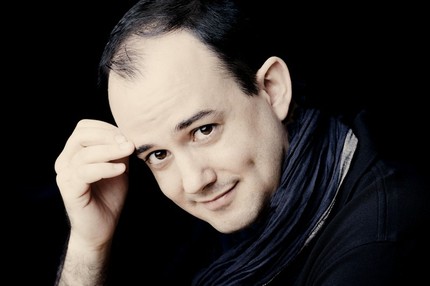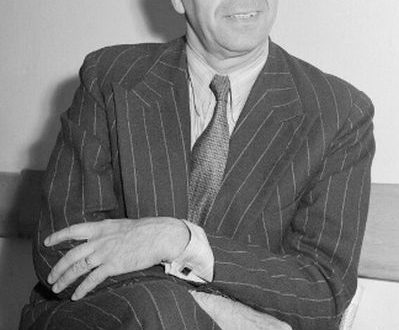
Toti Dal Monte (Toti Dal Monte) |
Toti Dal Monte
Toti Dal Monte (real name – Antonietta Menegelli) was born on June 27, 1893 in the town of Mogliano Veneto. “My artistic name – Toti Dal Monte – was not, in the words of Goldoni, the fruit of a “cunning invention”, but belongs to me by right, the singer later wrote. “Toti is a diminutive of Antoniette, that’s what my family affectionately called me from early childhood. Dal Monte is the surname of my grandmother (on my mother’s side), who came from a “noble Venetian family”. I took the name Toti Dal Monte from the day of my debut on the opera stage by accident, under the influence of a sudden impulse.
Her father was a school teacher and leader of the provincial orchestra. Under his guidance, Toti from the age of five was already well solfegged and played the piano. Acquainted with the basics of music theory, at the age of nine she sang simple romances and songs by Schubert and Schumann.
Soon the family moved to Venice. Young Toti began to visit the Femice Opera House, where she first heard Mascagni’s Rural Honor and Puccini’s Pagliacci. At home, after the performance, she could sing her favorite arias and excerpts from operas until the morning.
However, Toti entered the Venice Conservatory as a pianist, studying with Maestro Tagliapietro, a student of Ferruccio Busoni. And who knows how her fate would have turned out if, already almost finishing the conservatory, she had not injured her right hand – she had torn a tendon. This led her to the “queen of bel canto” Barbara Marchisio.
“Barbara Marchisio! recalls Dal Monte. “She taught me with infinite love the correct emission of sound, clear phrasing, recitatives, the artistic embodiment of the image, vocal technique that does not know any difficulties in any passages. But how many scales, arpeggios, legato and staccato had to be sung, achieving the perfection of performance!
Halftone scales were Barbara Marchisio’s favorite teaching medium. She made me take two octaves down and up in one breath. In class, she was always calm, patient, explained everything simply and convincingly, and very rarely resorted to angry reprimands.
Daily classes with Marchisio, great desire and perseverance with which the young singer works, give brilliant results. In the summer of 1915, Toti performed for the first time in an open concert, and in January 1916 he signed his first contract with Milan’s La Scala theater for a measly reward of ten lire a day.
“And then the day of the premiere came,” the singer writes in her book “Voice Above the World”. Feverish excitement reigned on the stage and in the dressing rooms. The elegant audience, filling every seat in the auditorium, was impatiently waiting for the curtain to rise; Maestro Marinuzzi encouraged the singers, who were nervous and very worried. And I, I … didn’t see or hear anything around; in a white dress, a blond wig… made up with the help of my partners, I seemed to myself the epitome of beauty.
Finally we took the stage; I was the smallest of all. I look with wide eyes into the dark abyss of the hall, I enter at the right moment, but it seems to me that the voice is not mine. And besides, it was an unpleasant surprise. Running up the steps of the palace with the maids, I got tangled in my too-long dress and fell, hitting my knee hard. I felt a sharp pain, but immediately jumped up. “Maybe no one noticed anything?” I cheered up, and then, thank God, the act ended.
When the applause died down and the actors stopped giving encores, my partners surrounded me and began to console me. Tears were ready to spring from my eyes, and it seemed that I was the most miserable woman in the world. Wanda Ferrario comes up to me and says:
“Don’t cry, Toti… Remember… You fell at the premiere, so expect good luck!”
The production of “Francesca da Rimini” on the stage of “La Scala” was an unforgettable event in the musical life. Newspapers were full of rave reviews about the play. Several publications also noted the young debutante. The Stage Arts newspaper wrote: “Toti Dal Monte is one of the promising singers of our theater”, and the Musical and Drama Review noted: “Toti Dal Monte in the role of Snow White is full of grace, she has a juicy timbre of voice and an extraordinary sense of style” .
From the very beginning of her artistic activity, Toti Dal Monte toured Italy extensively, performing in various theaters. In 1917 she performed in Florence, singing the solo part in Pergolesi’s Stabat Mater. In May of the same year, Toti sang three times in Genoa at the Paganini Theater, in the opera Don Pasquale by Donizetti, where, as she herself believes, she had her first major success.
After Genoa, the Ricordi Society invited her to perform in Puccini’s opera The Swallows. New performances took place at the Politeama Theater in Milan, in Verdi’s operas Un ballo in maschera and Rigoletto. Following this, in Palermo, Toti played the role of Gilda in Rigoletto and participated in the premiere of Mascagni’s Lodoletta.
Returning from Sicily to Milan, Dal Monte sings in the famous salon “Chandelier del Ritratto”. She sang arias from operas by Rossini (The Barber of Seville and William Tell) and Bizet (The Pearl Fishers). These concerts are memorable for the artist due to her acquaintance with the conductor Arturo Toscanini.
“This meeting was of great importance for the future fate of the singer. In early 1919, the orchestra, conducted by Toscanini, performed Beethoven’s Ninth Symphony for the first time in Turin. Toti Dal Monte participated in this concert with tenor Di Giovanni, bass Luzicar and mezzo-soprano Bergamasco. In March 1921, the singer signed a contract to tour the cities of Latin America: Buenos Aires, Rio de Janeiro, San Paolo, Rosario, Montevideo.
In the midst of this first big and successful tour, Toti Dal Monte received a telegram from Toscanini with an offer to participate in a new production of Rigoletto included in the repertoire of La Scala for the 1921/22 season. A week later, Toti Dal Monte was already in Milan and began painstaking and hard work on the image of Gilda under the guidance of the great conductor. The premiere of “Rigoletto” staged by Toscanini in the summer of 1921 entered the treasury of world musical art forever. Toti Dal Monte created in this performance the image of Gilda, captivating in purity and grace, being able to convey the subtlest shades of feelings of a loving and suffering girl. The beauty of her voice, combined with the freedom of phrasing and the perfection of her vocal performance, testified that she was already a mature master.
Satisfied with the success of Rigoletto, Toscanini then staged Donizetti’s Lucia di Lammermoor with Dal Monte. And this production was a triumph … “
In December 1924, Dal Monte sang with success in New York, at the Metropolitan Opera. Just as successfully in the US, she performed in Chicago, Boston, Indianapolis, Washington, Cleveland and San Francisco.
The fame of Dal Monte quickly spread far beyond Italy. She traveled to all continents and performed with the best singers of the last century: E. Caruso, B. Gigli, T. Skipa, K. Galeffi, T. Ruffo, E. Pinza, F. Chaliapin, G. Bezanzoni. Dal Monte managed to create many memorable images, such as Lucia, Gilda, Rosina and others, over the course of more than thirty years of performances on the stages of the best opera houses in the world.
One of her best roles, the artist considered the role of Violetta in Verdi’s La traviata:
“Recalling my speeches in 1935, I already mentioned Oslo. It was a very important stage in my artistic career. It was here, in the picturesque capital of Norway, that I first sang the part of Violetta in La Traviata.
This so human image of a suffering woman – a tragic love story that touched the whole world – could not leave me indifferent. It is superfluous to say that there are strangers around, an oppressive feeling of loneliness. But now hope has awakened in me, and it immediately felt somehow easier in my soul …
The echo of my brilliant debut reached Italy, and soon the Italian radio was able to transmit a recording of the third performance of La Traviata from Oslo. The conductor was Dobrovein, a rare connoisseur of the theater and an inspired musician. The test really turned out to be very difficult, and besides, outwardly, I did not look very impressive on stage because of my short stature. But I worked tirelessly and succeeded …
Since 1935, the part of Violetta has occupied one of the main places in my repertoire, and I had to endure a far from easy duel with very serious “rivals”.
The most famous Violettas of those years were Claudia Muzio, Maria Canilla, Gilda Dalla Rizza and Lucrezia Bori. It’s not for me, of course, to judge my performance and make comparisons. But I can safely say that La Traviata brought me no less success than Lucia, Rigoletto, The Barber of Seville, La Sonnambula, Lodoletta, and others.
The Norwegian triumph was repeated at the Italian premiere of this opera by Verdi. It took place on January 9, 1936 at the Neapolitan theater “San Carlo” … The Piedmontese prince, the Countess d’Aosta and the critic Pannein were present at the theater, a real thorn in the heart of many musicians and singers. But everything went perfectly. After a storm of applause at the end of the first act, the audience’s enthusiasm grew. And when, in the second and third acts, I managed to convey, as it seems to me, all the pathos of Violetta’s feelings, her boundless self-sacrifice in love, the deepest disappointment after an unjust insult and the inevitable death, the admiration and enthusiasm of the audience were boundless and touched me.
Dal Monte continued to perform during World War II. According to her, she found herself in 1940-1942 “between a rock and a hard place and could not refuse pre-agreed concerts in Berlin, Leipzig, Hamburg, Vienna.”
At the first opportunity, the artist came to England and was truly happy when, at a London concert, she felt that the audience was increasingly captured by the magical power of music. In other English cities she was received just as warmly.
Soon she went on another tour of Switzerland, France, Belgium. Returning to Italy, she sang in many operas, but most often in The Barber of Seville.
In 1948, after a tour of South America, the singer leaves the opera stage. Sometimes she acts as a dramatic actress. He devotes a lot of time to teaching. Dal Monte wrote the book “Voice over the world”, translated into Russian.
Toti Dal Monte died on January 26, 1975.





